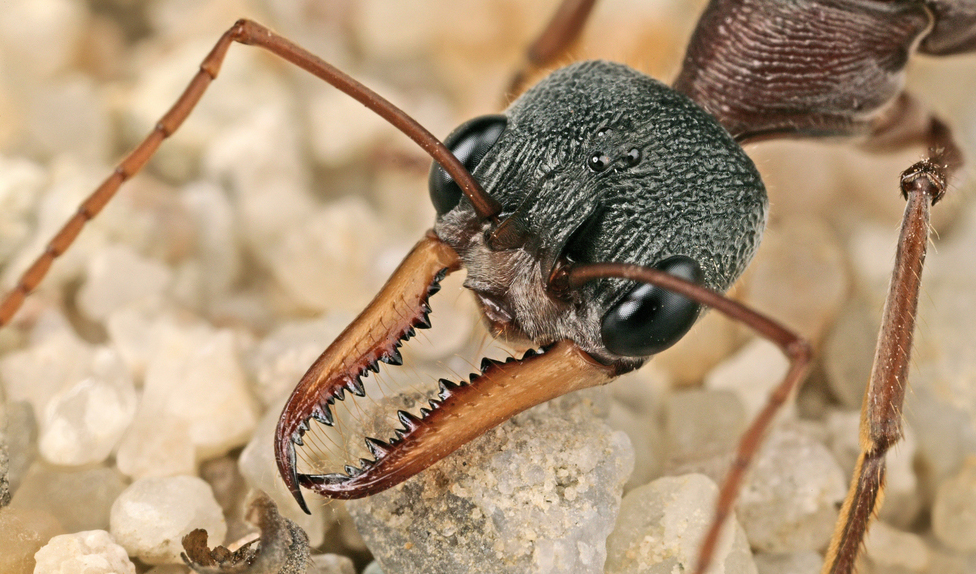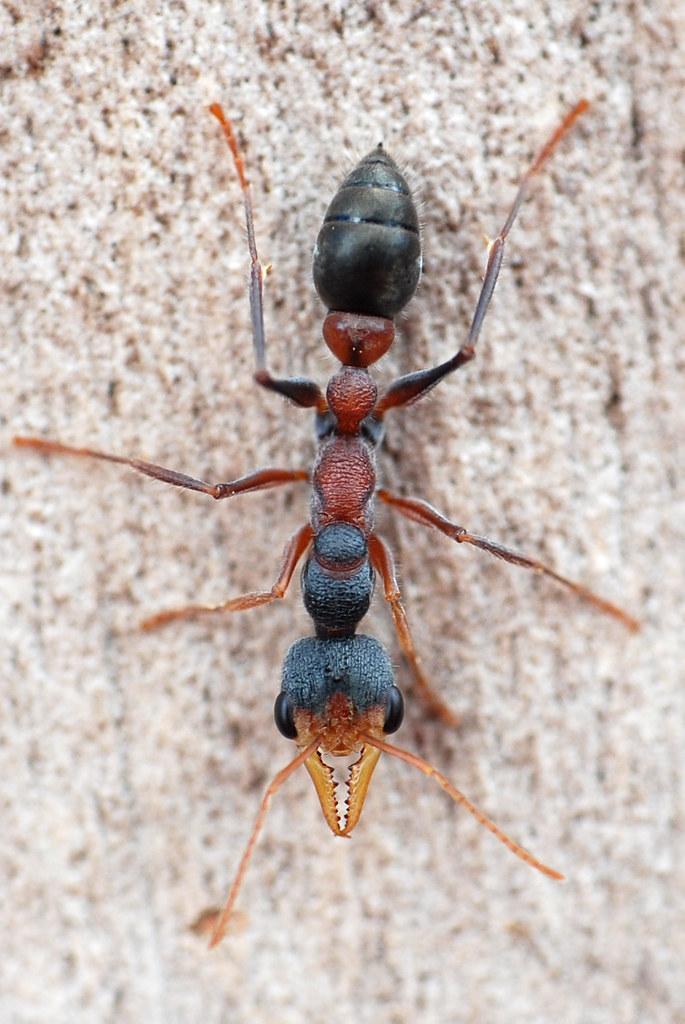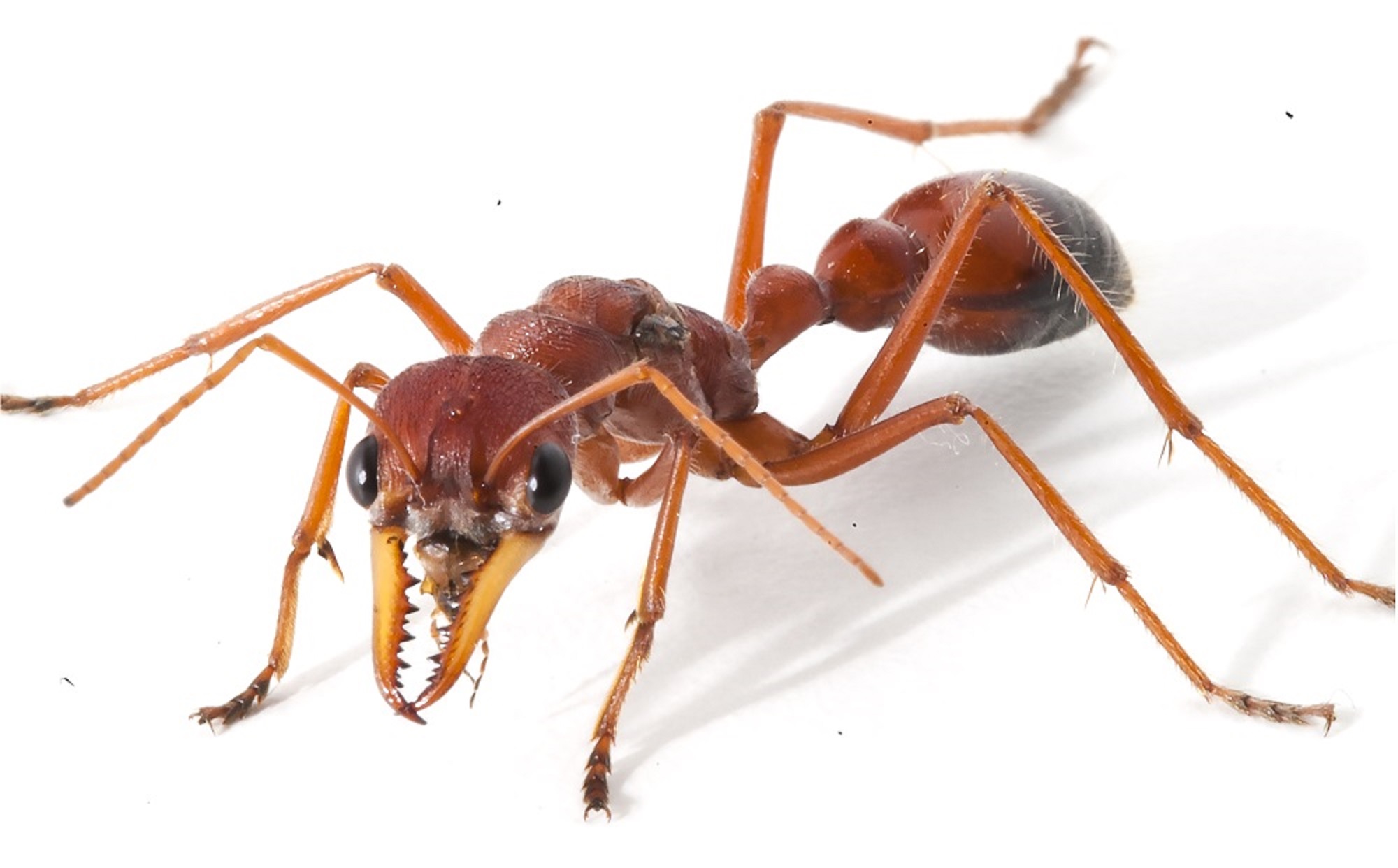BULL ANTS
The Scary Truth about Bull Ants
Bull Ants are large, alert ants that can grow up to 40 mm They have characteristic large eyes and long, slender mandibles and a potent venom-loaded sting. They have superior vision, able to track and even follow intruders. A bite for a Bull Ant or Jumper Ant will cause a great deal of pain, with the toxin injecting into the wound and spreading throughout the body in seconds. In some cases, they may even cause death if their stings do not receive medical attention within half an hour. Learn more about these huge ants that you don’t want to mess within this article!
What is a Bull ant?
A bull ant is an insect belonging to several genera of ants within subfamily Myrmeciinae. These are large, alert ants that can grow up to 40 millimetres (1.6 in) long; they have characteristic large eyes and long, slender mandibles and a potent venom-loaded sting. They have superior vision, able to track and even follow intruders; however, their main form of communication is through pheromones which they spray as a territorial marker. A bite for a bull ant or jumper ant will cause pain and swelling similar to that caused by other social hymenopterans such as bees or wasps, but with less likelihood of it being fatal if untreated. Bull ants are very aggressive when disturbed in their nest
Where do bull ants come from?
There are two species of bull ants that can be found in Australia, known as Iridomyrmex and Myrmecia. The Iridomyrmex have a much greater distribution with eight different species, whereas Myrmecia only has four. In both cases, you’ll find them in all parts of Australia except for Tasmania and some coastal islands. Despite their big appearance and large stings, they’re actually quite harmless unless provoked or disturbed.
How do you know if you’ve been bitten by a Bull ant?
Take a look at your bite wound. If you see two fang marks and one is indented, then you’ve been bitten by a Bull ant. This indentation will be caused by its mandible as it inserts its stinger into your skin. A Wasp or other insect with needle-like jaws will have puncture holes in your skin rather than an indentation from its jaws. The sting from a Bull ant can cause immediate swelling and may remain swollen for days after.
How do you treat a Bull ant bite?
While it is important to seek professional help as soon as possible, if you cannot immediately get to a doctor or hospital, there are things you can do to minimize your discomfort and expedite healing. Most importantly, do not squeeze or pierce the bite wound! This will cause more venom to enter your bloodstream and extend recovery time significantly.
According to the AIHW’s Venomous Bites and Stings in Australia report, “one-third of reported cases of serious stings occurred “in or around” the home. Depending on the individual’s reaction to a bite, treatment varies from washing the area and applying ice, to calling triple zero.”
Danger to humans
These ants can deliver painful stings and are aggressive. An ice pack or commercially available spray may be used to relieve the pain of the sting. If there is evidence of an allergic reaction, medical attention should be sought.
Resources:
Australian Museum
Wikipedia
Allergy.org.au
Jack Jumper Ant
![]()



